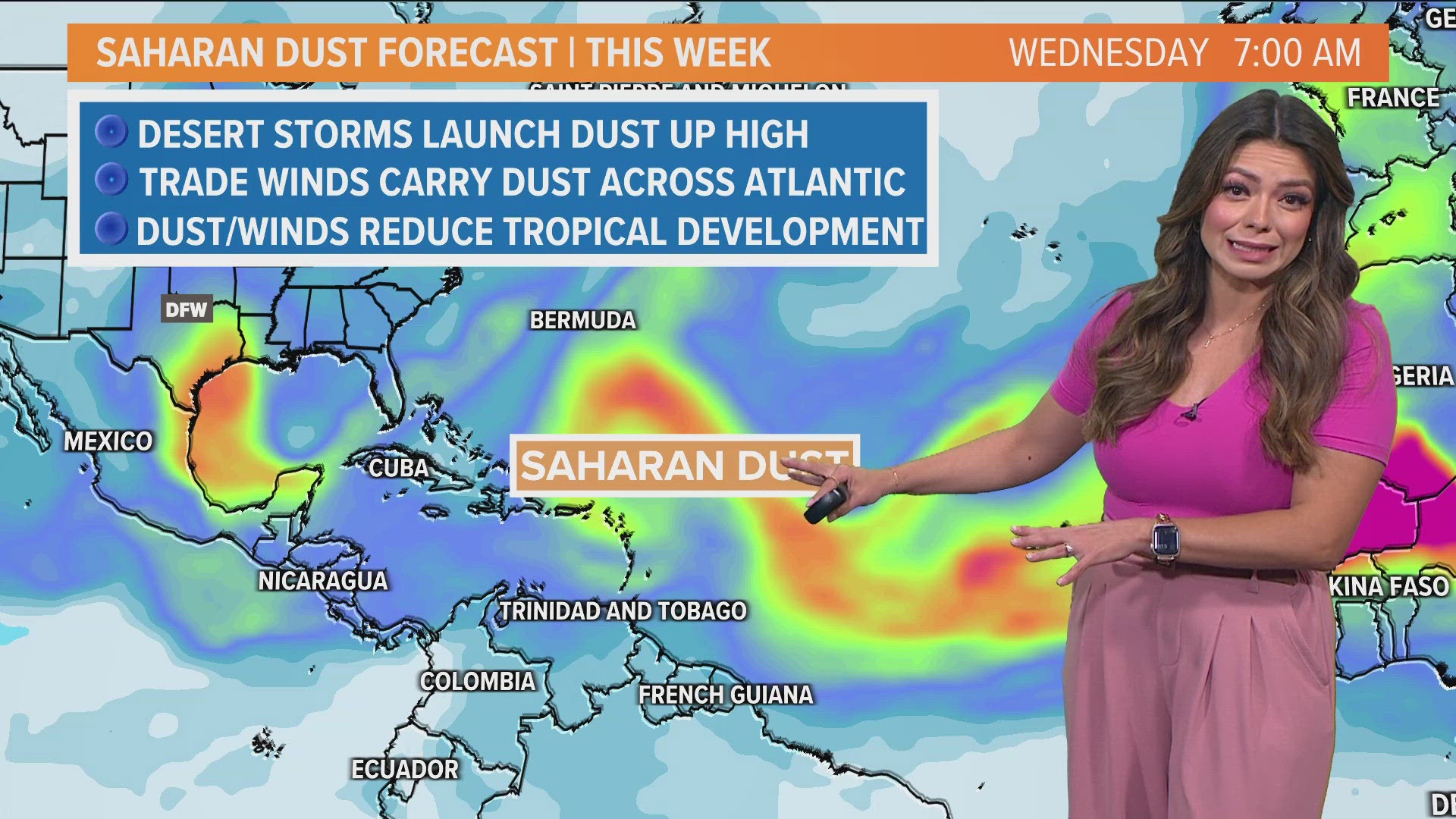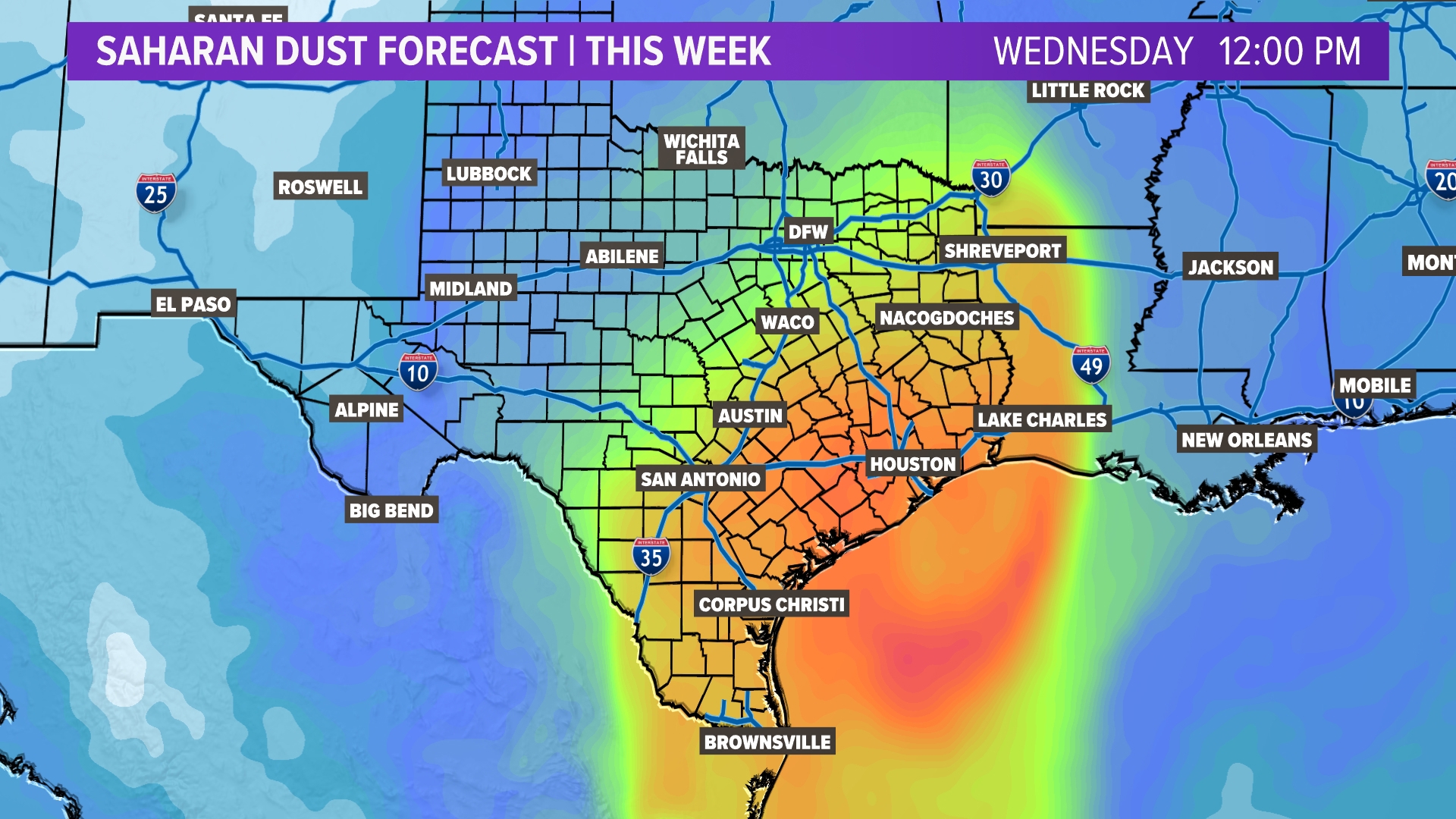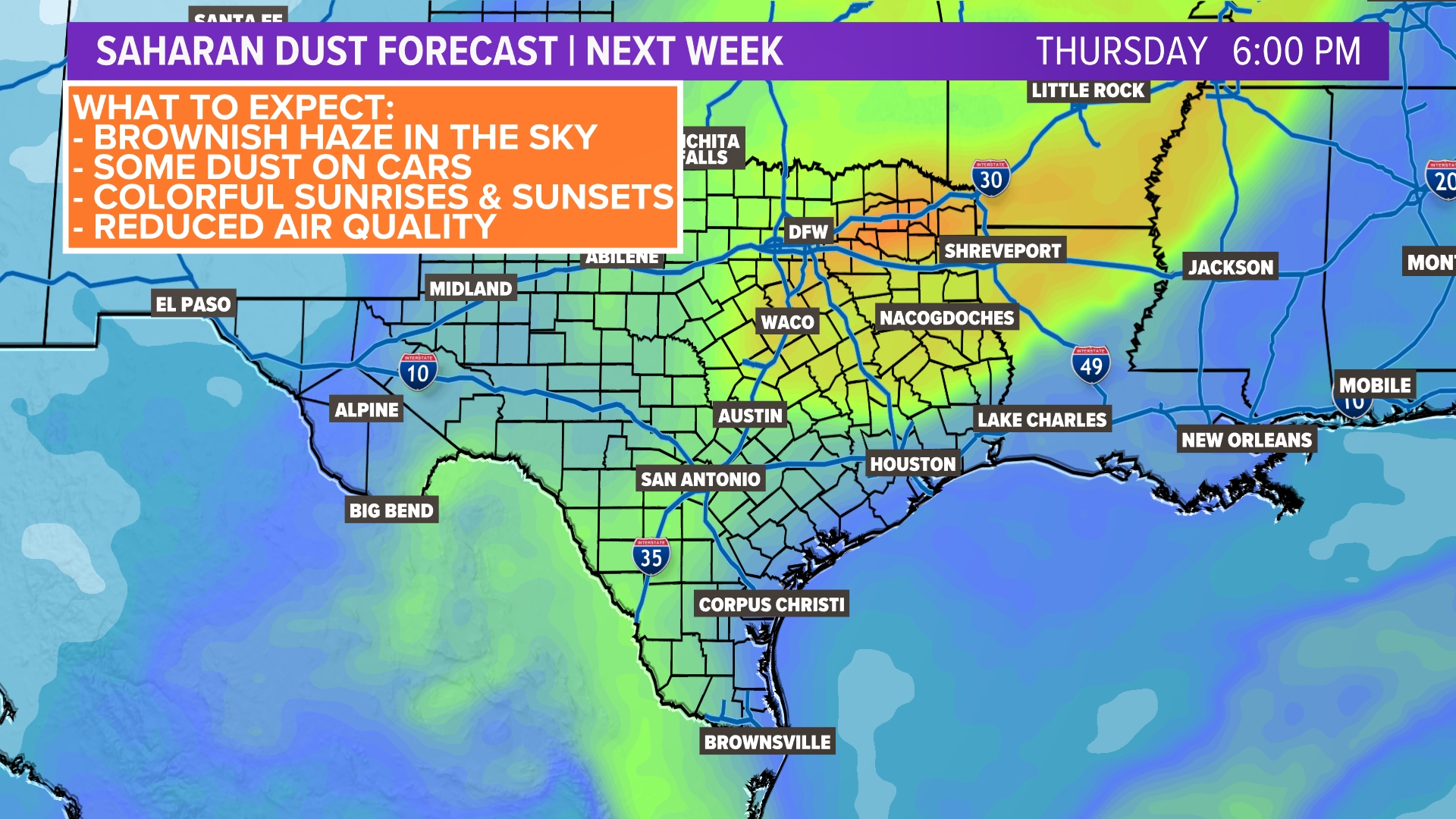DALLAS — This week North Texas will experience a phenomenon from across the Atlantic: a plume of Saharan dust.
It'll likely arrive Wednesday and it is expected to linger through Thursday. Saharan dust is known to bring hazy skies, colorful sunrises and sunsets. Unfortunately, it also brings potential respiratory issues.
It is important to note that it won't look like a wall of dust moving in. Rather, it will look a bit more like a haze settling in. The thicker plumes of dust tend to settle on outdoor surfaces like cars, so you may need a car wash this weekend!
What is Saharan Dust?
Saharan dust refers to fine particles of sand and mineral dust lifted from the Sahara Desert. The dust particles are small enough to be carried by strong winds (often referred to as the trade winds) along great distances. Saharan dust can travel thousands of miles, even the five to seven-thousand-mile trek to Texas.
How Does It Travel So Far?
The dust is typically lifted into the atmosphere by strong storms in the Saharan Desert particularly during the late spring, summer to early autumn months. These winds can lift millions of tons of dust into the air, where it is picked up by the easterly trade winds and transported across the Atlantic Ocean. The dust eventually reaches the United States, often reaching the southern states, including Texas. While the Saharan dust travels across the Atlantic, it is also linked to lower tropical activity. This is due to the changes in temperature and humidity dust can bring to the mid-levels of the atmosphere.
Impact on Health and Environment
Air Quality: The influx of dust can lower air quality, making it hazardous for sensitive groups, including children, the elderly, and those with respiratory conditions like asthma. These groups should limit outdoor activities during this time.
Allergic Reactions: Even those without respiratory issues might experience allergic reactions, including sneezing, coughing, and itchy eyes, due to the higher amounts of particles in the air.
Visibility: The dust can create a haze. Drivers generally see this down the interstate when looking for skylines.
What Can You Do?
To minimize the impact of Saharan dust, consider the following precautions:
- Stay Indoors: Limit outdoor activities, especially if you belong to a sensitive group. Keep windows and doors closed to reduce the amount of dust entering your home.
- Use Air Filters: If you have an air conditioning system, ensure it's equipped with a good quality filter to help reduce indoor air pollution.
- Monitor Air Quality: Stay informed by checking local air quality reports.
Yes, the arrival of Saharan dust is natural and something that happens every year. As we brace for hazy skies and triple-digit heat, let's also take care of our health and enjoy the unique sunsets and sunrises this dust brings.
Stay safe and stay cool, North Texas!



